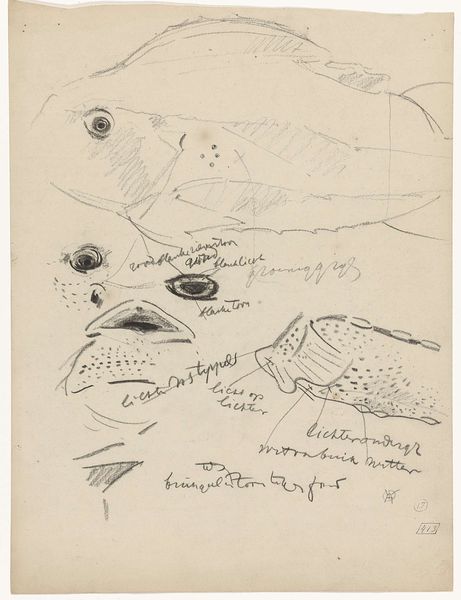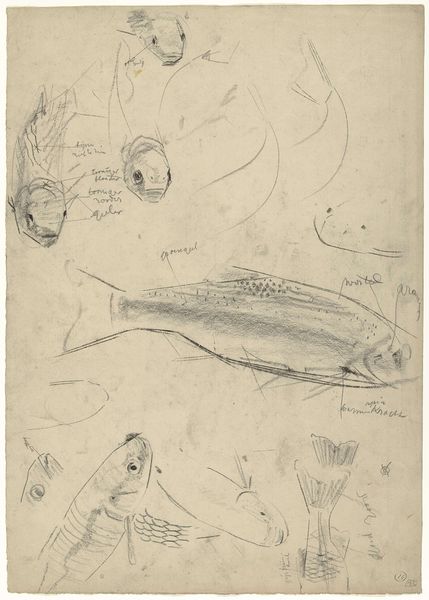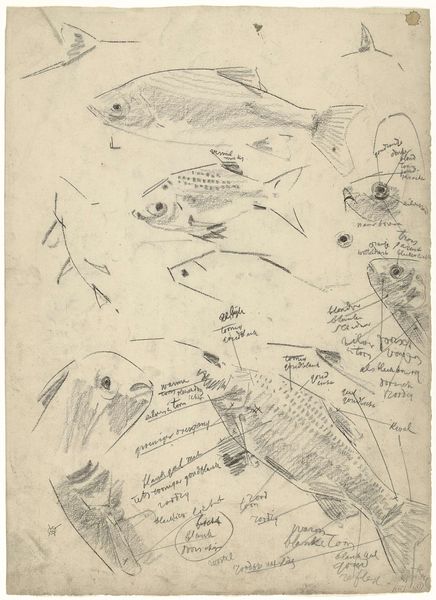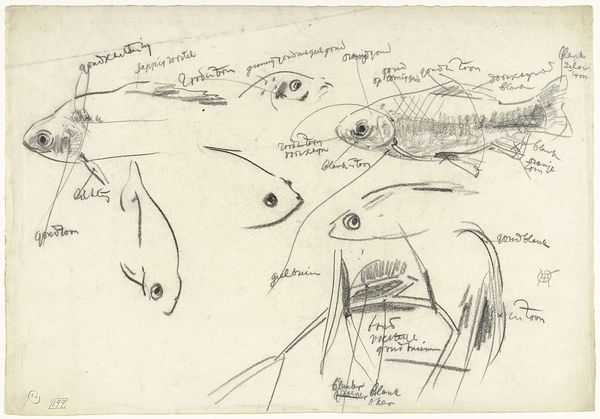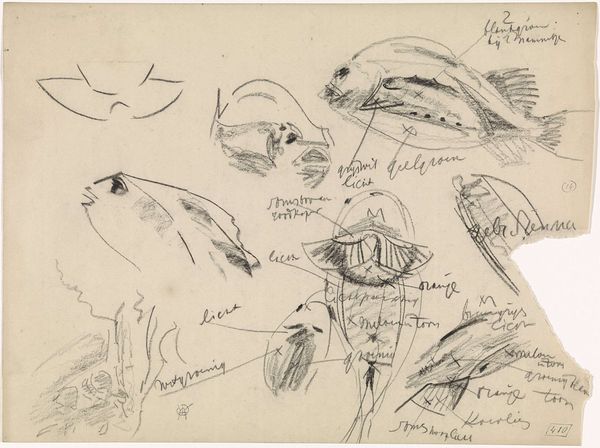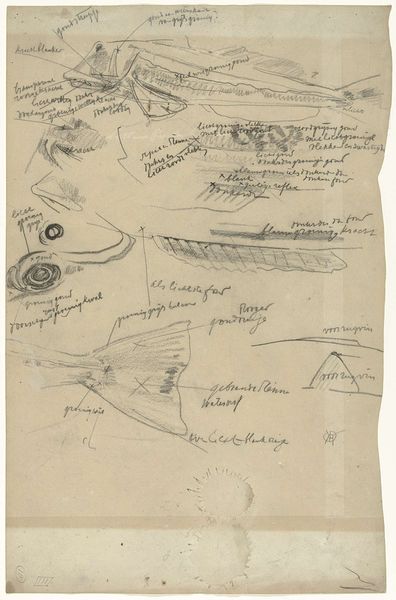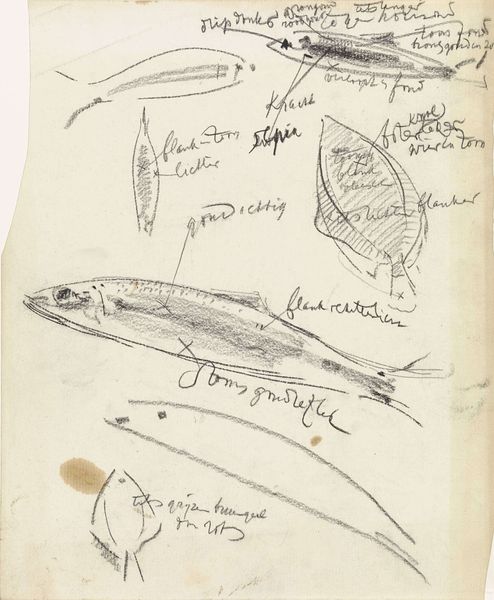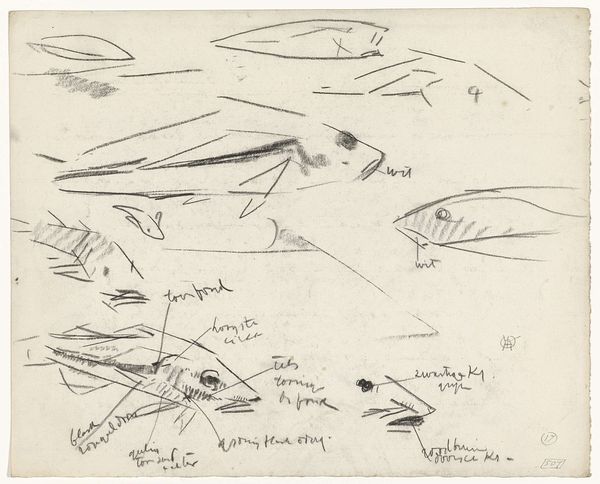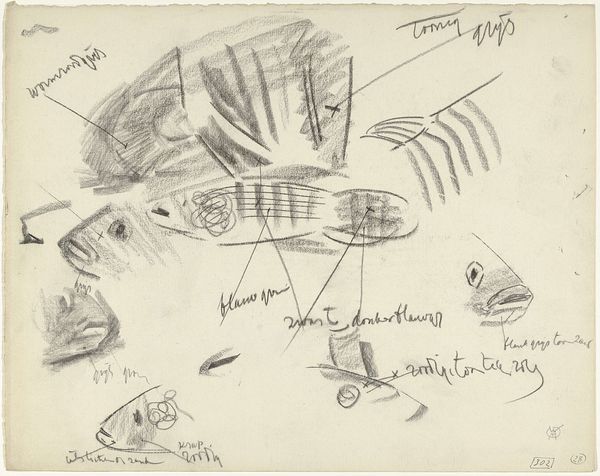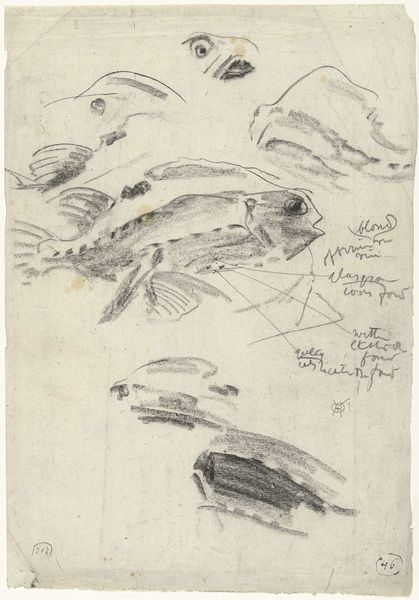
drawing, pencil
#
drawing
#
quirky sketch
#
pen sketch
#
personal sketchbook
#
sketchwork
#
ink drawing experimentation
#
pen-ink sketch
#
pencil
#
sketchbook drawing
#
storyboard and sketchbook work
#
naturalism
#
sketchbook art
#
realism
#
initial sketch
Dimensions: height 348 mm, width 303 mm
Copyright: Rijks Museum: Open Domain
Curator: Welcome! Before us hangs "Studies van vissen, met kleurnotities" a work by Gerrit Willem Dijsselhof created sometime between 1876 and 1924. It's currently held here at the Rijksmuseum. Editor: It has the look and feel of a page torn right from the artist’s personal sketchbook—sort of scattered but lively. The way he uses pencil and ink to capture the different angles and textures, especially around the gills, makes it appealing, even tactile. Curator: Dijsselhof was deeply influenced by the naturalism of his era, aligning himself politically with socialist ideals during the emergence of labor movements. We can contextualize this drawing, not simply as objective scientific observation, but within broader narratives of industrialization, its impact on the fishing trade, and the exploitation of natural resources at the turn of the century. Editor: I see that focus on materials reflected in the sketches themselves. The variations in pressure with the pencil, combined with color notes on the page suggest close study and intimate knowledge of the fish themselves as material, a thing of labor extracted from the sea. It is more about direct contact. Curator: Consider, also, that naturalism in art, literature and political thought arose in the second half of the nineteenth century partly out of concern that the most disadvantaged could access and interpret the artistic depiction of the material world, often tied to socialist ideals of education. Dijsselhof’s drawing gives voice to voiceless creatures exploited by these labor movements. Editor: That's a valuable point! The notes scattered across the page show it’s also clearly about process, which adds another layer. These are not polished finished works. They speak more to the making of art itself and all the thought processes there. The drawing makes that visible. Curator: It highlights how representations, even seemingly simple studies of fish, can become sites of contestation. Are they merely aesthetic objects? Or reflections on our socio-economic realities? Editor: And how the artist translates the natural world to page becomes material for a later work—maybe a painting, a print… It makes me consider the materiality of nature and art simultaneously. Curator: Thank you! Editor: A fresh view for me as well.
Comments
No comments
Be the first to comment and join the conversation on the ultimate creative platform.
